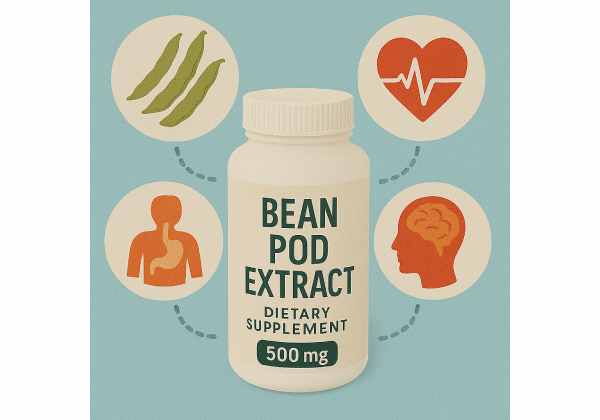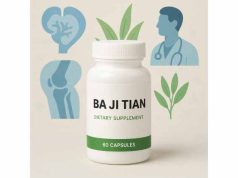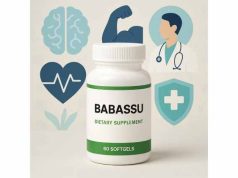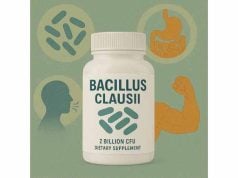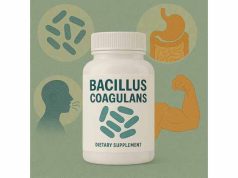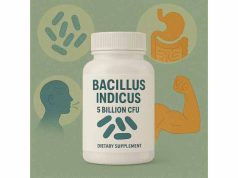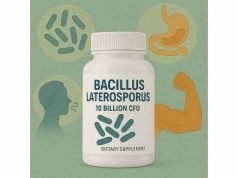Curious if bean pod extract can help with blood sugar or weight? This natural supplement, traditionally used for centuries in herbal medicine, is now gaining renewed interest for its potential to support healthy glucose levels, weight management, and kidney function—without harsh side effects. Bean pod extract, made from the outer shells of common beans (Phaseolus vulgaris), delivers unique plant compounds believed to promote metabolic wellness, digestive comfort, and urinary health. Modern research is uncovering fresh evidence behind these time-tested uses. In this comprehensive guide, you’ll discover what bean pod extract is, how it works, its top evidence-backed benefits, recommended dosage, and what you need to know about safety and interactions.
Key Takeaways
- Bean pod extract may help support healthy blood sugar, urinary tract health, and gentle weight management.
- Traditionally used in herbal medicine for kidney support and as a natural diuretic.
- Most common dosage is 1000–3000 mg daily, taken before meals or as a tea.
- Side effects are rare but can include mild digestive changes or allergic reaction in sensitive individuals.
- Not a replacement for diabetes medications or medical care—use as part of a healthy lifestyle.
Table of Contents
- Bean Pod Extract Introduction: Plant Sources, History, and Overview
- The Biology and Scientific Mechanism Behind Bean Pod Extract
- Primary Benefits and Evidence-Based Uses of Bean Pod Extract
- Bean Pod Extract Safety, Side Effects, and Interaction Guide
- How to Use Bean Pod Extract: Dosage, Forms, and Best Practices
- Bean Pod Extract FAQs: Your Top Questions Answered
Bean Pod Extract Introduction: Plant Sources, History, and Overview
Bean pod extract is derived from the outer shells—or “pods”—of the common bean plant (Phaseolus vulgaris), which also produces familiar varieties like kidney beans, navy beans, and pinto beans. Unlike bean extracts made from the seeds themselves, bean pod extract is prized for its unique blend of plant fibers, minerals, and phytochemicals that are concentrated in the pod tissue.
Origins and Botanical Background
- Plant source: The common bean, native to Central and South America, is cultivated globally for both its edible seeds and medicinal pods.
- Traditional use: Herbalists have long prepared teas and infusions from dried bean pods to support kidney function, urinary health, and gentle blood sugar regulation.
- Supplement form: Today, bean pod extract is found in capsules, teas, tinctures, and as an ingredient in various “blood sugar support” formulas.
How Is Bean Pod Extract Made?
After beans are harvested, the pods are collected, dried, and finely milled. Water or alcohol-based extraction methods are then used to concentrate the beneficial compounds—without the lectins found in raw beans, which can be irritating if not removed.
Traditional and Modern Uses
Bean pod extract has a strong tradition in European and North American herbalism for:
- Promoting healthy kidney and bladder function (as a mild diuretic)
- Supporting metabolic health and gentle weight control
- Reducing “water weight” and bloating
- Providing gentle support for healthy blood sugar balance, especially in older adults
Modern users are often drawn to bean pod extract as a natural alternative to pharmaceutical diuretics or glucose-lowering drugs—seeking a milder, food-based option with a long safety record.
How Is Bean Pod Extract Different from Bean Seed or White Kidney Bean Extract?
- Bean seed extract: Often used for “carb-blocking” and weight loss due to its alpha-amylase inhibitor content.
- Bean pod extract: Used more for metabolic, urinary, and gentle diuretic effects. It contains unique plant flavonoids, saponins, and fibers not concentrated in the seeds.
Summary Table: Bean Pod vs. Bean Seed Extract
| Source | Main Use | Common Compounds |
|---|---|---|
| Bean seed | Carb blocking, weight loss | Amylase inhibitors, protein |
| Bean pod | Blood sugar, urinary, diuretic | Fiber, flavonoids, minerals |
Who Uses Bean Pod Extract?
- Adults seeking natural blood sugar or kidney support
- Those wanting a gentle diuretic to reduce bloating or fluid retention
- People looking for plant-based, stimulant-free weight management tools
- Herbalists and those interested in traditional remedies
Forms Available
- Dried pod for teas and decoctions
- Capsules and tablets with standardized extract
- Liquid tinctures or blends for rapid absorption
In summary, bean pod extract bridges the worlds of folk medicine and modern supplementation, offering a time-tested option for those looking to support metabolic and urinary wellness naturally.
The Biology and Scientific Mechanism Behind Bean Pod Extract
The benefits of bean pod extract stem from its complex mixture of plant compounds—primarily fibers, flavonoids, and saponins—each working in subtle ways to influence metabolic and urinary health. Understanding how these components act in the body can help you make an informed decision about this supplement.
Key Active Components
- Soluble and insoluble fibers: Help slow the absorption of sugar in the digestive tract and support healthy digestion.
- Flavonoids (plant antioxidants): Believed to support vascular and kidney health by reducing oxidative stress.
- Saponins: Plant chemicals that may gently support immune function and promote cholesterol balance.
- Minerals: Bean pods are a natural source of potassium and magnesium, which are important for blood pressure and fluid balance.
How Does Bean Pod Extract Work?
Blood Sugar Support
- Slowing glucose absorption: The high fiber content of bean pods can help reduce post-meal spikes in blood sugar by slowing carbohydrate breakdown and absorption.
- Insulin sensitivity: Some phytochemicals in bean pods may help improve the body’s sensitivity to insulin, supporting more balanced blood sugar levels over time.
Diuretic and Kidney Support
- Mild diuretic effect: Bean pod extract has traditionally been used as a natural diuretic, increasing urine output and reducing water retention. This can help alleviate mild bloating or puffiness.
- Urinary tract support: Flavonoids and saponins in the pod may soothe the urinary tract lining and reduce the risk of minor infections.
Weight and Metabolic Support
- Calorie reduction: By slowing carbohydrate absorption, bean pod extract may contribute to reduced calorie intake.
- Supporting satiety: The fiber content helps promote feelings of fullness, which can aid in portion control and weight management.
- Cholesterol balance: Some studies suggest saponins and fibers from bean pods may help reduce the absorption of cholesterol from food.
Modern Research and Traditional Wisdom
While large-scale clinical trials are limited, smaller studies and traditional use suggest bean pod extract may be beneficial as:
- An adjunct to healthy eating and activity for people at risk of diabetes or mild hypertension
- A gentle alternative for those unable to tolerate stronger pharmaceutical diuretics or blood sugar-lowering drugs
Does Bean Pod Extract Block Carbs Like White Kidney Bean Extract?
Bean pod extract does not strongly inhibit alpha-amylase (the enzyme that digests starch) like some bean seed extracts do. Instead, its metabolic effects are primarily through fiber and phytochemicals that moderate absorption and fluid balance.
Is It Safe for Long-Term Use?
Traditional herbal practice suggests bean pod extract is safe for ongoing use at moderate doses, as long as hydration and nutrition are maintained. Always consult your healthcare provider if you plan to use it alongside prescription medications or for chronic health issues.
Table: Main Mechanisms and Health Targets
| Mechanism | Primary Health Target |
|---|---|
| Slows glucose absorption | Blood sugar, metabolism |
| Mild diuretic action | Kidneys, fluid retention |
| Antioxidant support | Vascular and urinary health |
| Supports satiety | Weight, appetite control |
In summary, bean pod extract works through a variety of gentle, synergistic mechanisms—offering holistic support for several aspects of metabolic and urinary wellness.
Primary Benefits and Evidence-Based Uses of Bean Pod Extract
Bean pod extract is a multi-faceted supplement with a range of traditional and modern uses, primarily focused on metabolic, urinary, and digestive wellness. Here’s a closer look at the key evidence-based benefits—and who stands to gain the most.
1. Blood Sugar Regulation and Support
One of the most researched benefits of bean pod extract is its potential to help regulate blood glucose levels:
- Slows post-meal sugar spikes: By providing a natural source of soluble fiber, bean pod extract can help blunt the rise in blood sugar after carbohydrate-rich meals.
- Supports insulin function: Some users report improved energy, fewer “crashes,” and steadier moods when supplementing with bean pod extract alongside healthy eating.
- Best for: Adults at risk of type 2 diabetes, those with mild insulin resistance, and anyone aiming to maintain balanced blood sugar naturally.
2. Gentle Diuretic for Kidney and Urinary Health
Bean pod extract’s traditional use as a diuretic is supported by its ability to increase urinary output without dramatically altering electrolyte balance:
- Reduces bloating and fluid retention: Useful for those experiencing mild water retention, especially before travel, special events, or during hormonal fluctuations.
- Supports kidney “cleansing”: While no supplement can “detox” the body, bean pod extract can promote healthy urination, helping the kidneys perform their natural filtration role.
- Urinary comfort: Some herbalists use bean pod extract for those prone to minor urinary tract discomfort.
3. Weight Management and Appetite Control
Although not a “fat burner,” bean pod extract aids weight management through several gentle effects:
- Promotes satiety: The fiber helps you feel fuller, longer—naturally supporting portion control.
- Reduces calorie absorption: By slowing the digestive process, it may help decrease total calorie uptake from carbohydrates.
- Best for: People seeking mild, plant-based support for weight control or looking for extra help resisting “second helpings.”
4. Digestive Wellness
- Eases digestion: Bean pod extract’s fiber content can help regulate bowel movements and promote digestive comfort.
- Soothes gut lining: Traditional herbalists sometimes recommend bean pod tea for those with sensitive digestion or mild gastrointestinal discomfort.
5. Potential Heart and Vascular Support
- Cholesterol support: Some evidence suggests bean pod extract’s saponins and fibers may help lower LDL cholesterol over time.
- Antioxidant protection: Flavonoids may help counteract oxidative stress in blood vessels, supporting overall vascular wellness.
Who Benefits Most?
- People with mild metabolic syndrome, prediabetes, or a family history of diabetes
- Adults seeking a gentle, food-based diuretic for fluid balance
- Those struggling with mild bloating or digestive irregularity
- Individuals looking for plant-based ways to support cardiovascular health
Limitations and Realistic Expectations
- Not a cure or replacement for prescription drugs: Always consult your doctor if you have chronic kidney disease, diabetes, or heart conditions.
- Effects are gentle and cumulative: Benefits often take weeks to become noticeable and are best paired with other healthy habits.
- Results vary: As with all supplements, individual experiences depend on diet, lifestyle, and genetics.
Summary Table: Main Uses and Advantages
| Use | Who May Benefit Most |
|---|---|
| Blood sugar support | Prediabetic adults, energy dips |
| Mild diuretic | Bloating, water retention |
| Appetite/weight management | Portion control seekers |
| Digestive comfort | Those with sluggish digestion |
| Cholesterol/blood vessel | Heart-conscious adults |
In essence, bean pod extract stands out as a versatile, well-tolerated herbal ally for modern metabolic, urinary, and digestive needs.
Bean Pod Extract Safety, Side Effects, and Interaction Guide
Bean pod extract is generally considered safe and well-tolerated when used as recommended, but it’s important to be aware of possible side effects, interactions, and special considerations. As with any supplement, safety depends on individual health status, product quality, and adherence to dosing guidelines.
General Safety Profile
Bean pod extract, derived from the pods of the Phaseolus vulgaris plant, has a long history of use in traditional herbal medicine. Most modern supplements are standardized and manufactured under quality controls, further supporting its safety. For most healthy adults, the risk of serious side effects is low, especially when the supplement is used for short- or medium-term support.
Common and Mild Side Effects
Most reported side effects are mild and temporary, related primarily to the high fiber content and natural diuretic properties:
- Digestive changes: Mild gas, bloating, or changes in bowel habits may occur as your body adjusts to increased fiber. These usually fade within a week or two of consistent use.
- Mild diuretic effect: Increased urination is normal, especially if you are sensitive to diuretics. Drink enough water to stay hydrated.
- Mild nausea or stomach upset: Rare, but can happen if taken on an empty stomach or in doses above the recommended range.
Rare or Serious Side Effects
- Allergic reaction: Rare but possible, particularly for individuals with legume or bean allergies. Signs include rash, itching, swelling, or difficulty breathing. Discontinue use immediately and seek medical attention if these occur.
- Electrolyte imbalance: Uncommon at recommended doses, but possible with chronic overuse, especially in people with kidney issues or those on other diuretics.
Who Should Use Caution or Avoid Bean Pod Extract?
- Children and teens: Safety for those under 18 is not well established.
- Pregnant or breastfeeding women: Limited evidence exists for use in pregnancy or lactation; consult a healthcare provider before using.
- People with legume allergies: Anyone allergic to beans or legumes should avoid all bean-derived supplements.
- Individuals with chronic kidney disease or electrolyte disorders: Always consult your healthcare provider first, as the mild diuretic effect could affect fluid or mineral balance.
Medication and Supplement Interactions
Bean pod extract is not known to interact with most common medications, but there are exceptions:
- Diabetes medications: If you use insulin or oral blood sugar-lowering drugs, monitor your blood glucose closely, as bean pod extract could enhance their effect and risk hypoglycemia (low blood sugar).
- Other diuretics or antihypertensives: If you are taking prescription diuretics or blood pressure medications, use caution, as bean pod extract may mildly amplify their effect, increasing urination or lowering blood pressure further.
- Fiber supplements: Combining bean pod extract with other high-fiber supplements may increase gas or digestive discomfort; introduce new products slowly.
Long-Term Safety
Traditional use and modern reports suggest bean pod extract can be taken for several weeks or months without major risks for most people. Still, ongoing use (longer than three months) should be monitored by a healthcare provider, especially if you have underlying health conditions or are taking multiple medications.
How to Minimize Side Effects
- Start with a low dose: Gradually increase to the recommended level to let your digestive system adjust.
- Take with food: This reduces the chance of nausea or upset stomach.
- Stay hydrated: Compensate for mild diuretic effects by drinking water throughout the day.
- Monitor your body: If symptoms persist or worsen, stop use and consult a medical professional.
Signs You Should Stop Using Bean Pod Extract
- Persistent diarrhea, abdominal pain, or digestive upset
- Signs of allergy (hives, swelling, shortness of breath)
- Severe or unexplained fatigue, muscle cramps, or irregular heartbeat
Myths About Bean Pod Extract Safety
- Myth: “It’s totally side-effect free.”
Fact: Most users experience no problems, but minor digestive changes are common. Overuse or combining with similar supplements can increase risk. - Myth: “Natural means safe for everyone.”
Fact: Natural products can interact with drugs or cause allergic reactions, especially in sensitive people.
Bottom Line
When used responsibly and purchased from reputable brands, bean pod extract offers a gentle and generally safe way to support metabolic and urinary wellness. As always, those with chronic health concerns should involve their healthcare provider in supplement decisions.
How to Use Bean Pod Extract: Dosage, Forms, and Best Practices
Maximizing the benefits of bean pod extract depends on choosing the right dosage, form, and timing. Here’s a practical, evidence-informed approach to safe and effective use.
Recommended Dosage
- Standard adult dose: 1000–3000 mg of dried bean pod extract per day, typically divided into two or three doses.
- Teas: 1–2 grams of dried bean pods steeped in hot water, 1–3 times daily.
- Capsules/tablets: Follow manufacturer instructions; most provide 500–1000 mg per capsule, taken before meals.
It’s always best to start at the lower end of the range, especially if you are new to fiber supplements or prone to digestive sensitivity.
How to Take Bean Pod Extract
- Before meals: Taking the supplement 15–30 minutes before eating may maximize its blood sugar and appetite-regulating effects.
- With food: If you experience any nausea, take with a light snack or meal.
- As a tea: Pour boiling water over dried bean pods, steep 10–15 minutes, strain, and drink warm. Many people enjoy it after meals to support digestion and kidney function.
Choosing the Right Form
- Capsules/Tablets: Best for standardized dosage and convenience.
- Teas: Traditional and soothing, especially for urinary comfort and mild bloating.
- Tinctures/Liquid extracts: Useful for rapid absorption or when swallowing pills is difficult.
How Long Should You Take Bean Pod Extract?
- Short-term use: For occasional support (e.g., after heavy meals, before travel, during mild water retention), bean pod extract can be used for several days or weeks.
- Long-term use: For ongoing metabolic or urinary support, take for up to 2–3 months, followed by a break. Long-term continuous use should be supervised by a healthcare professional.
Combining with Other Supplements
- Multivitamins: Safe to use together, as bean pod extract does not block micronutrient absorption at recommended doses.
- Other blood sugar or diuretic herbs: Start with one product and monitor effects before combining.
Practical Tips for Best Results
- Consistency matters: For metabolic support, regular use is more effective than sporadic doses.
- Stay hydrated: Compensate for increased urination by drinking water throughout the day.
- Monitor your response: Track digestive, urinary, and energy changes to determine your personal optimal dose.
What to Do If You Miss a Dose
- Simply take your next scheduled dose; do not double up.
- The benefits are cumulative, so regular use is more important than perfect timing.
Table: Dosage and Form At a Glance
| Form | Typical Dose | When to Use |
|---|---|---|
| Capsules | 500–1000 mg, 2–3x/day | 15–30 min before meals |
| Tea | 1–2 g dried pod, 1–3x/day | After meals or as needed |
| Tincture | As directed (varies) | With water, before/after meals |
Signs of Proper Use
- Mild digestive comfort and improved regularity
- Reduced bloating or puffiness
- More stable energy and fewer blood sugar “crashes”
- Gentle increase in urinary output without dehydration
With smart dosing, quality products, and attentive self-monitoring, bean pod extract can be a useful part of a holistic wellness plan.
Bean Pod Extract FAQs: Your Top Questions Answered
What is bean pod extract used for?
Bean pod extract is mainly used for supporting healthy blood sugar levels, promoting urinary tract and kidney health, providing mild diuretic effects, and aiding gentle weight management as part of a healthy lifestyle.
Is bean pod extract good for diabetes or blood sugar?
Bean pod extract’s natural fibers and plant compounds may help blunt post-meal blood sugar spikes. It is not a substitute for prescribed diabetes medication, but can be a supportive addition to a balanced diet for some people.
Are there side effects from taking bean pod extract?
Most users tolerate bean pod extract well, but mild digestive changes (like gas or bloating) and increased urination can occur, especially at first. Allergic reactions are rare but possible in people sensitive to legumes.
How much bean pod extract should I take?
A typical adult dose is 1000–3000 mg daily, divided before meals or brewed as a tea. Always start low and adjust as needed, following product instructions and medical advice if you have health conditions.
Can I take bean pod extract with medications?
Bean pod extract may interact with diabetes drugs or diuretics, potentially increasing their effect. Always consult your healthcare provider before combining with prescription medications, especially for blood sugar or blood pressure.
Is bean pod extract safe for long-term use?
Short- and medium-term use (weeks to a few months) is generally safe for healthy adults. For longer use or if you have chronic conditions, seek medical advice to ensure ongoing safety.
Where can I buy bean pod extract and what should I look for?
Choose reputable brands offering third-party tested products, standardized dosages, and clear labeling. Bean pod extract is available at health food stores, pharmacies, and online supplement retailers.
Disclaimer
The information presented here is for educational purposes only and should not be considered a substitute for professional medical advice, diagnosis, or treatment. Always consult your healthcare provider before starting any new supplement, especially if you have underlying health conditions or take prescription medications.
If this article helped you, please share it with friends and family on Facebook, X (formerly Twitter), or your favorite social platform. Follow us for more science-backed wellness guides, and support quality health content for everyone!


